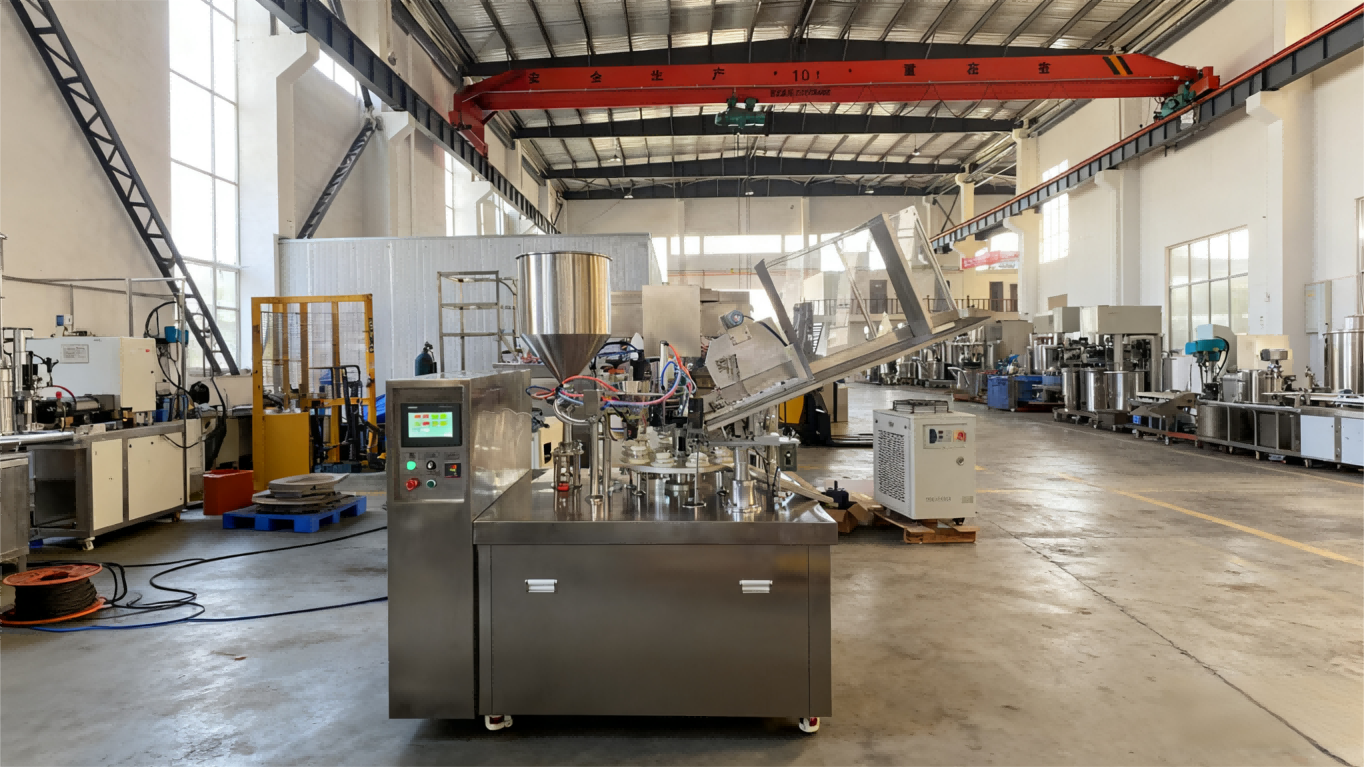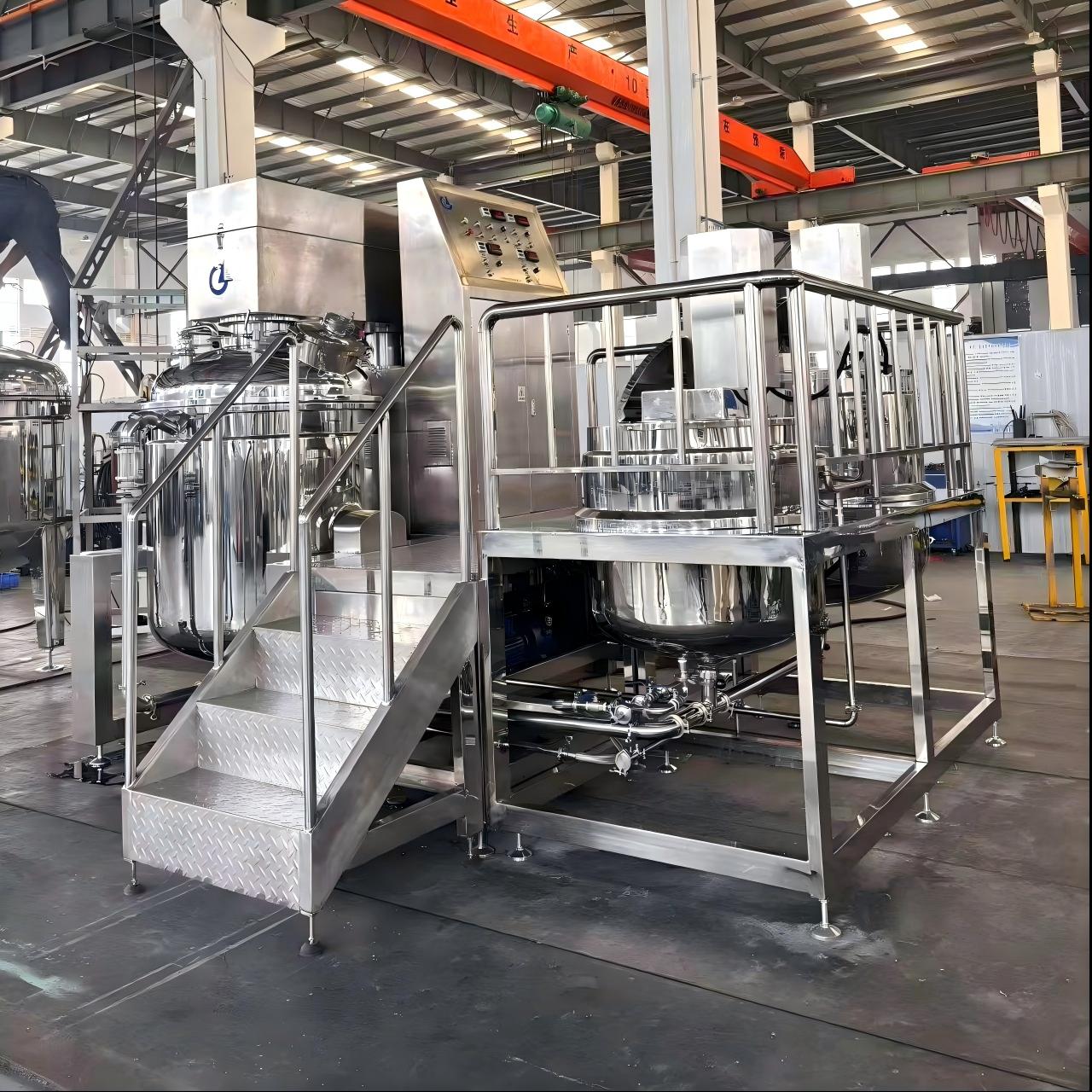What Is a Vacuum Emulsifying Mixer?
A vacuum emulsifying mixer is a specialized mixing device that operates under vacuum conditions to achieve emulsification and mixing of various substances. It is widely used in industries such as cosmetics, pharmaceuticals, food, and chemicals—playing a crucial role in both product development and mass production processes.
Typically, a vacuum emulsifying mixer consists of four core components: a mixing chamber, a vacuum system, a heating and cooling system, and a control system.
Mixing Chamber: This is the core area where raw materials are mixed and emulsified. It is equipped with high-speed rotating agitators (e.g., rotor-stator assemblies) and wall-scraping devices— the agitators generate shear force to accelerate emulsification, while the scrapers prevent material adhesion to the chamber wall, ensuring uniform mixing of all components.
Vacuum System: Its primary function is to maintain a stable vacuum environment inside the mixing chamber. By evacuating air, moisture, and other gases, it effectively avoids oxidation of heat-sensitive raw materials (e.g., plant extracts in cosmetics) and prevents contamination, directly safeguarding product quality. Additionally, the vacuum environment eliminates air bubbles in the mixture, which helps form smoother, more stable emulsions.
Heating and Cooling System: This system regulates the temperature inside the mixing chamber to match the requirements of different production processes. For example, it may heat raw materials to reduce viscosity (facilitating mixing) or cool the mixture after emulsification to prevent ingredient degradation—ensuring optimal emulsification and mixing effects at every stage.
Control System: It monitors and controls the entire operation of the mixer. Operators can adjust key parameters (such as agitator speed, vacuum level, and temperature) in real time according to production needs, and the system records process data to ensure consistent and stable product quality across batches.
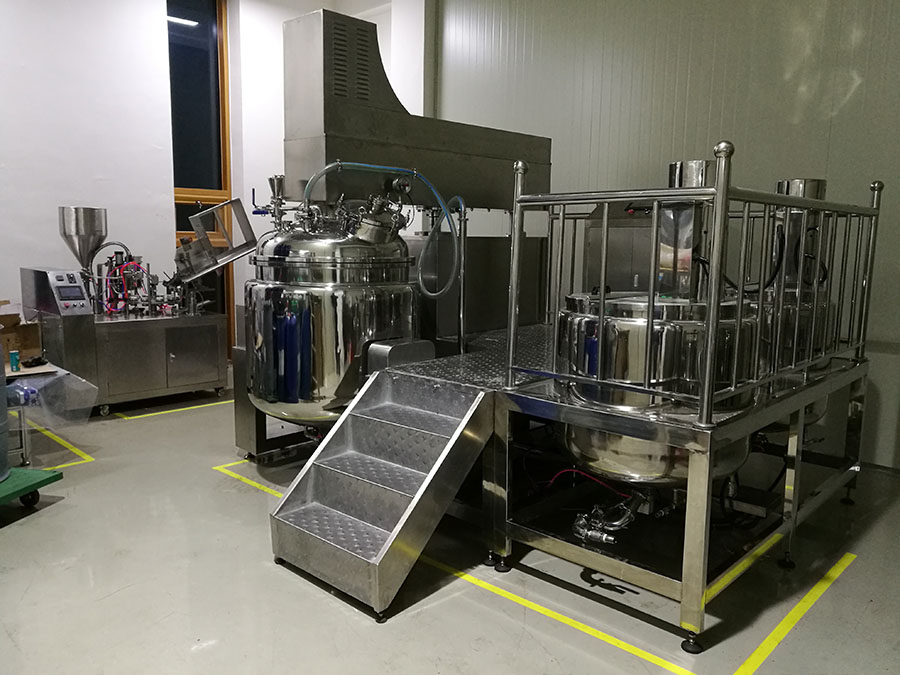
The main advantages of vacuum emulsifying mixers are as follows:
High Emulsification Efficiency: Under vacuum conditions, the device accelerates the fusion of immiscible substances (e.g., oil and water), significantly shortening mixing time and improving production efficiency.
Stable Product Quality: The vacuum environment prevents oxidation, contamination, and air bubble formation, ensuring the final product has uniform texture, long shelf life, and consistent performance.
Strong Versatility: It can handle a wide range of materials, including liquids, pastes, solids, and powders—making it applicable to cosmetics (e.g., lotions, creams), pharmaceuticals (e.g., ointments), and food (e.g., dairy creams) industries.
Easy Operation and Maintenance: With a simplified structure and user-friendly interface (e.g., touchscreen controls), the mixer is easy to operate; its core components are also designed for quick disassembly, reducing maintenance time and costs.
In summary, as a high-performance specialized mixing device, the vacuum emulsifying mixer leverages vacuum technology to address key pain points in emulsification (e.g., oxidation, air bubbles). Its reliability and versatility make it an indispensable piece of equipment in cosmetics, pharmaceuticals, food, and chemical industries, supporting both R&D and large-scale production.
News
- Latest News
- Solutions
- FAQ
Recommend Products
-
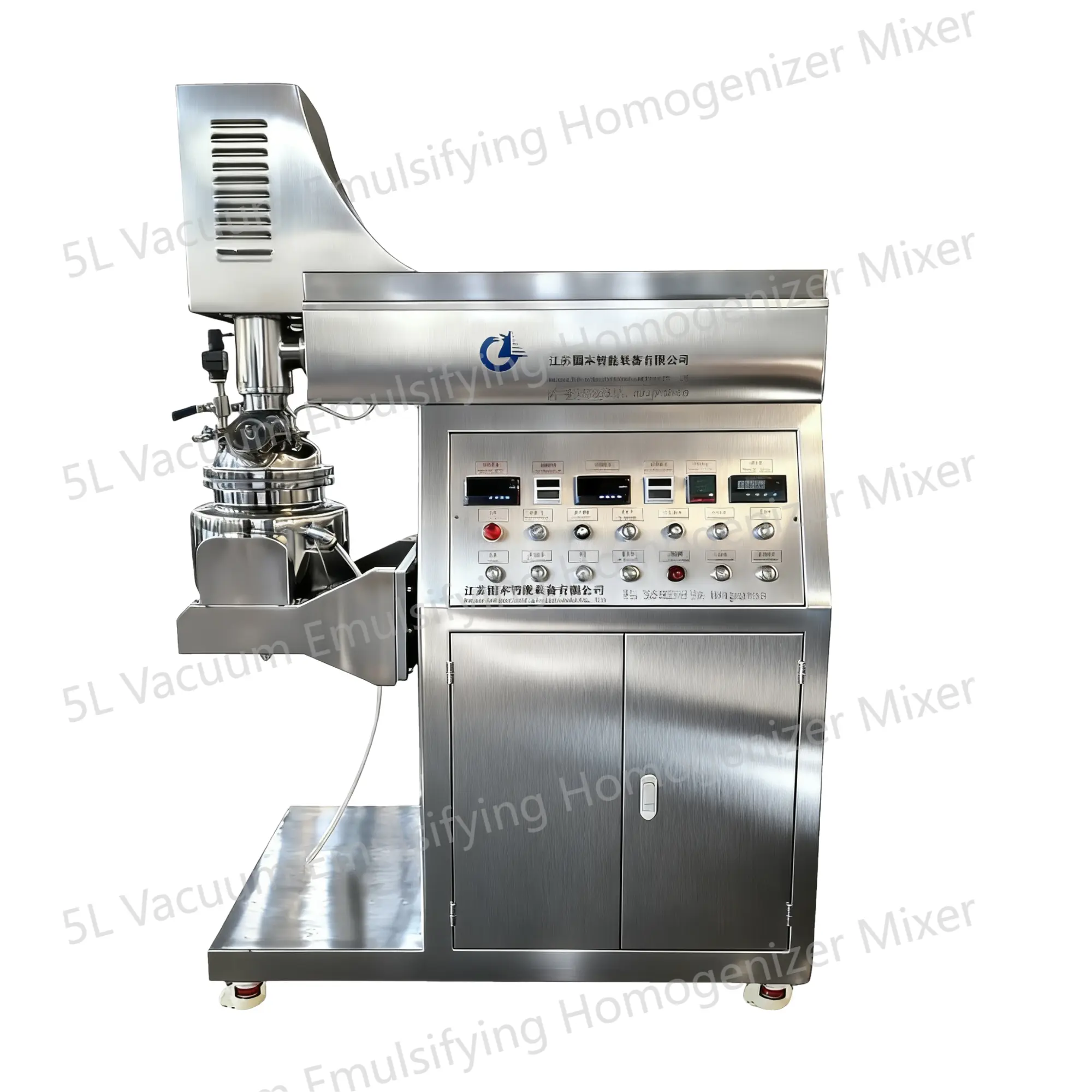 5L Vacuum Emulsifying Homogenizer Mixer
5L Vacuum Emulsifying Homogenizer MixerThe 5L vacuum emulsifying mixer is a device designed for emulsifying and mixing various substances in a vacuum environment. This equipment is equipped with a mixing tank with a capacity of 5 liters and is widely applied in industries such as food, pharmaceuticals, cosmetics, and pesticides.
-
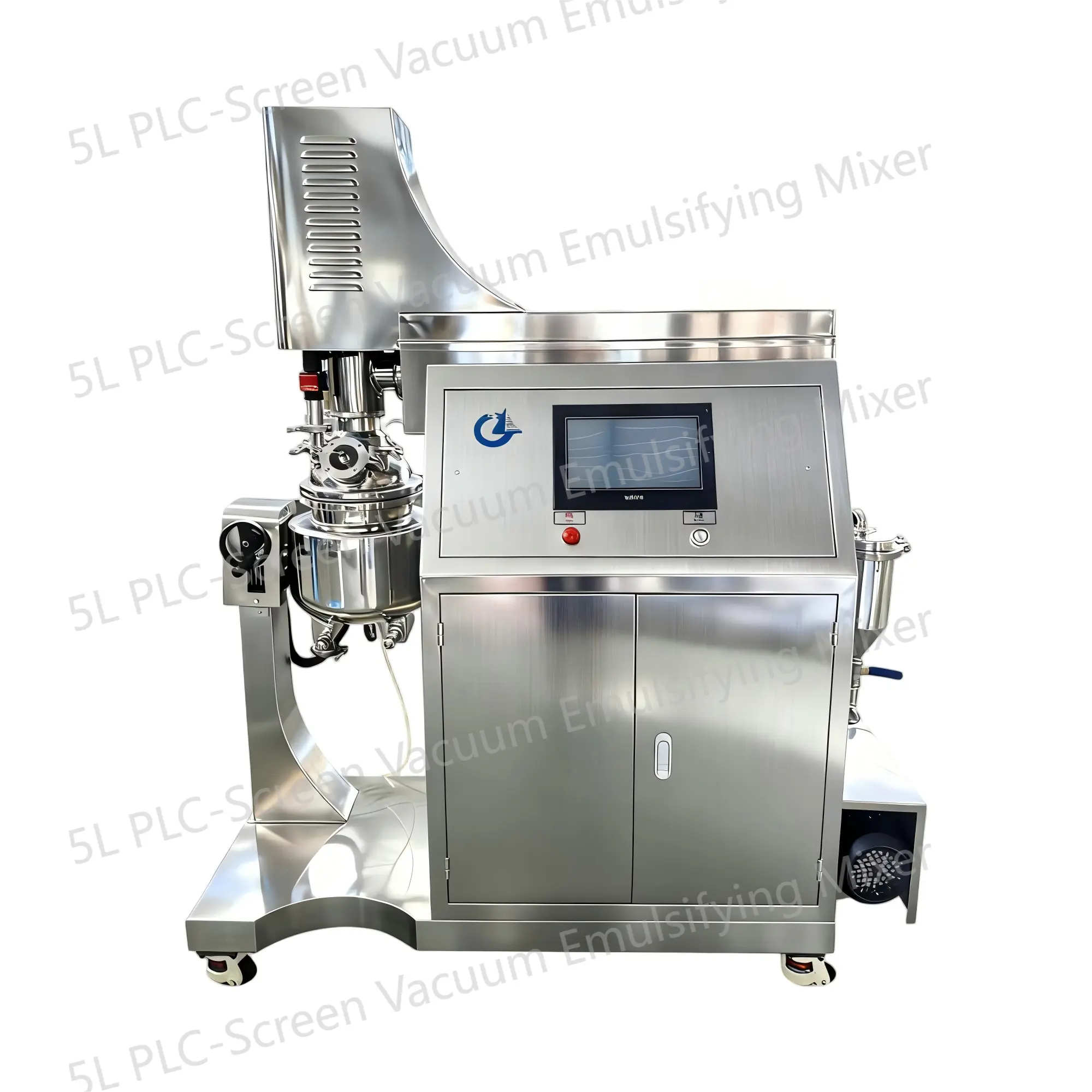 5L PLC-Screen Vacuum Emulsifying Mixer
5L PLC-Screen Vacuum Emulsifying MixerThe 5L PLC-Screen Vacuum Emulsifying Mixer is a device designed for emulsifying and mixing various substances in a vacuum environment. This equipment is equipped with a mixing tank with a capacity of 5 liters and is widely applied in industries such as food, pharmaceuticals, cosmetics, and pesticides.
-
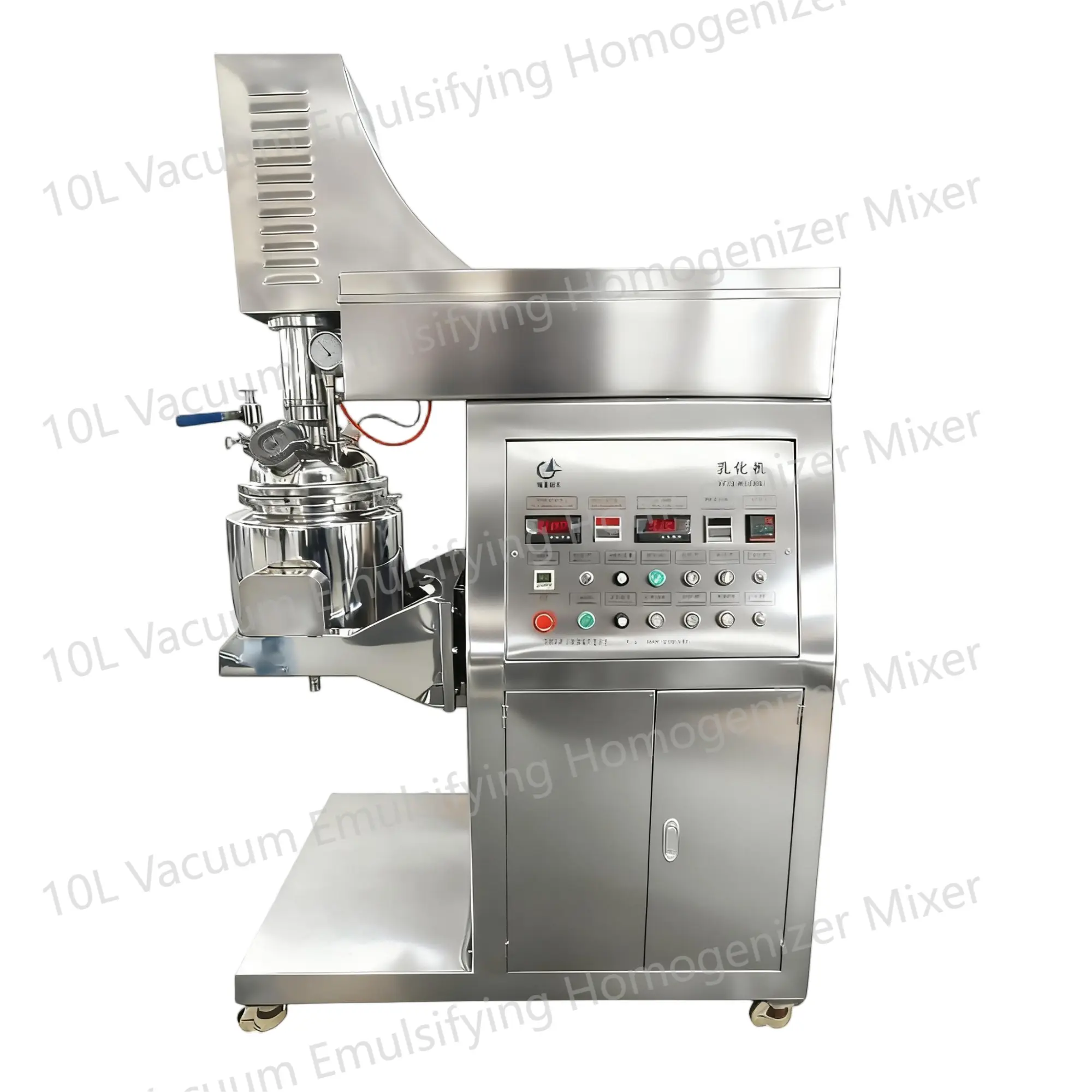 10L Vacuum Emulsifying Homogenizer Mixer
10L Vacuum Emulsifying Homogenizer MixerThe 10L Vacuum Emulsifying Mixer is a device used for emulsifying and mixing various substances in a vacuum environment. It is commonly used in industries such as food, cosmetics, and pharmaceuticals.


 English
English Russian
Russian French
French Spanish
Spanish Portuguese
Portuguese Korean
Korean Japanese
Japanese Thai
Thai
